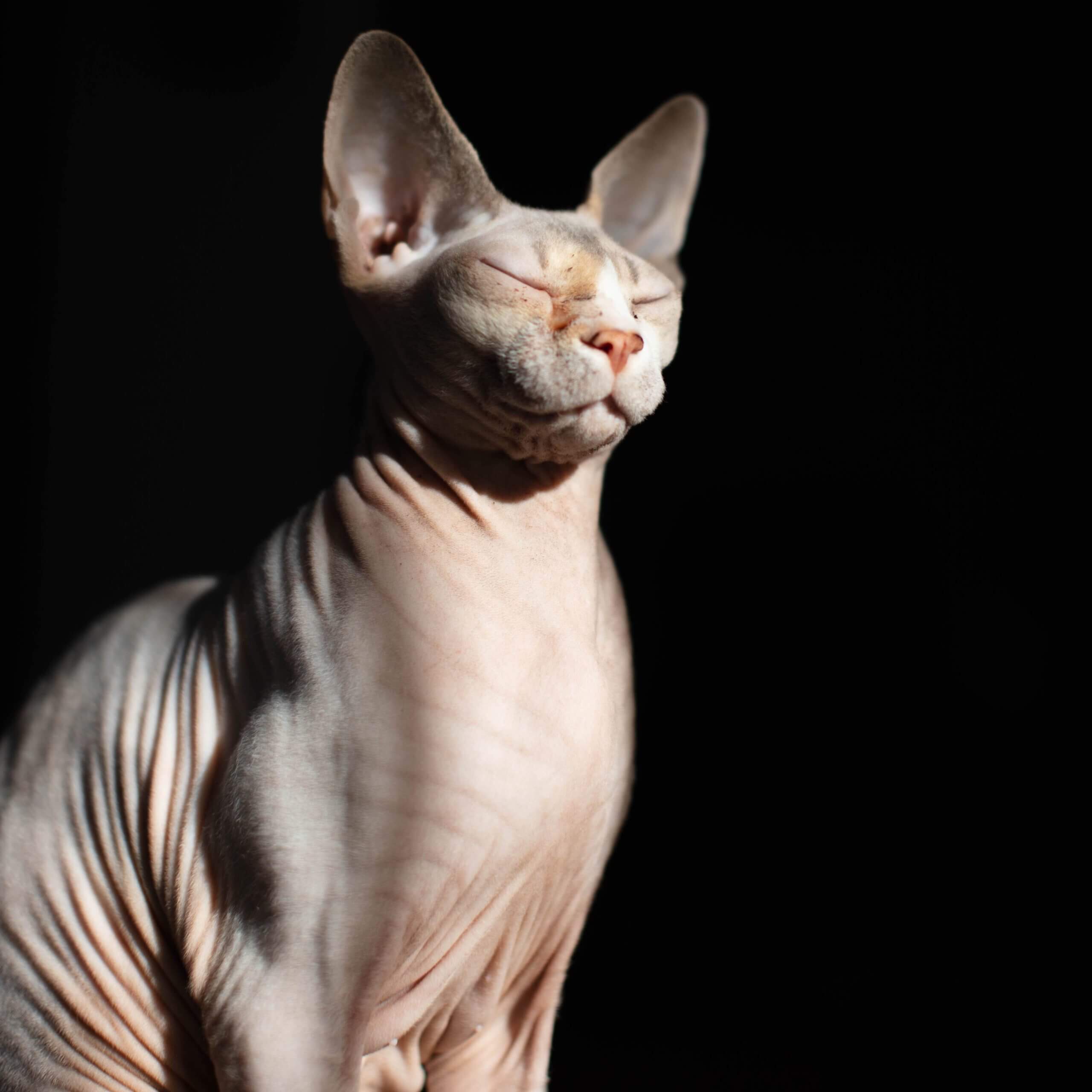
Do You Love Pets?? Sign up for our newsletter for more on how to help pets lead happier, healthier lives.
Sphynx Cats have a lot to offer their pet parents with their irresistible purrs and preference for curling up next to you (probably to stay warm).
These hairless cats look the way they do due to a naturally occurring genetic mutation. The sphynx breed occurred through selective breeding starting in the 1960s.
If you’re wondering what to know before getting a sphynx cat or already have one, you need to watch out for a few health conditions. Take a look at our guide for how to care for a sphynx cat.
Sphynx cats need help keeping their skin healthy and free of excess oils. Excess oils create skin problems like urticaria pigmentosa which creates red spots on the skin, and cutaneous mastocytosis, issues with ear wax, and infections. Your vet can genetically test your sphynx for urticaria pigmentosa as it often goes underdiagnosed in cats.
The quick answer to the oil problem: High-quality food. The better the food, the less oil your sphynx will produce-which also helps protect your cat from getting skin oils on your furniture. These cats also need intermittent baths (not too often-you could dry out their skin!) to remove oil and dirt. Look for special cat shampoos that can help manage these oils.
Sphynx cats also need protection from the sun, which ultimately means you shouldn’t let them go outside.
One, if not the most common sphynx cat health issue is not being able to regulate body temperature. As you might imagine, these cats get chilled easily because of their lack of fur. Special cat outfits, heated cat beds, and covered cat beds might make sense for keeping your Sphynx warm.
Again, sphynx cats should not go outside due to their trouble keeping warm and regulating their body temperatures.
Pet parents must keep their sphynx cat’s ears clean and free of excess wax to avoid ear infections.
Use regular gauze, cotton balls, makeup rounds, or tissues to clean and dry the inside of your cat’s ears. Stay away from cotton swabs, which could damage your cat’s eardrums.
Sphynx cats also need regular dental cleanings because they have challenges with their teeth.
Look for bad breath, tooth discoloration or tartar, difficulty eating, drooling, pawing at the teeth, or red, swollen, or bleeding gums. Luckily, periodontal disease is reversible with proper changes to dental care. Regular teeth cleanings, removing plaque, and potentially antibiotics (if necessary) can help your feline recover. If the gingivitis is not controlled it may become periodontitis, which is irreversible.
Hypertrophic cardiomyopathy (HCM) is another common sphynx cat disease. Sphynx cats are prone to hypertrophic cardiomyopathy, a heart disease in which the heart muscle becomes abnormally thick.
Additionally, blood clots may form in the heart muscle blocking proper blood flow to that region, weakening your cat’s heart over time. Your veterinarian should screen for heart issues at every checkup because the disorder can develop as your cat grows older.
An echocardiogram can confirm whether your sphynx cat has hypertrophic cardiomyopathy. Your veterinarian can also do blood tests, an electrocardiogram, chest X-ray, cardiac catheterization, or an MRI to diagnose hypertrophic cardiomyopathy.
Hereditary myopathy, also known as Devon Rex myopathy, is a generalized muscle weakness caused by a defect in how nerves transmit signals to the muscles and can seriously affect sphynx cats. Cats with HCM end up unable to walk and exercise due to muscle weakness.
Look for abnormal head-bobbing or a complete inability of your cat to raise its head properly or a high-stepping forelimb gait. You may see these signs more often due to stress or excitement. Signs of muscle weakness can show up from three to 23 weeks. Some cats with megaesophagus may experience ongoing problems swallowing and may choke to death.
A veterinarian can collect muscle tissue samples under anesthesia and can assess these samples for abnormalities for diagnosis.
These medium-sized cats, which weigh between 6 to 12 pounds, have an average lifespan of 8 to 14 years. With proper veterinary care, your pet can live a long and healthy life.
Note that sphynx cats are generally healthy, but when they develop certain conditions, including hypertrophic cardiomyopathy or hereditary myopathy, it can cut your pet’s life span considerably.
It’s really important to vet your veterinarian before you take your sphynx cat to a particular veterinary practice. Make sure you know whether your veterinarian knows a lot about sphynx cats and has experience dealing with their specific needs.
Your sphynx cat has a special role in your family. You want to give your pet the right veterinary care. Sphynx cats also require a little bit more attention and care than other breeds.
Sign up for a pet insurance policy today while you have a young sphynx cat. Doing this early means you can get reimbursed later on in your cat’s life, particularly if your sweet pet develops a chronic illness or other covered condition.
Let Spot Pet Insurance help you with the costs of giving your special cat the best life possible.
Melissa Brock, pet parent of a black fur-shedding feline, is the founder of College Money Tips and Money editor at Benzinga. She loves helping families navigate their finances.
Sign up for our newsletter for more on how to help pets lead happier, healthier lives.
Sign up for our newsletter for more on how to help pets lead happier, healthier lives.